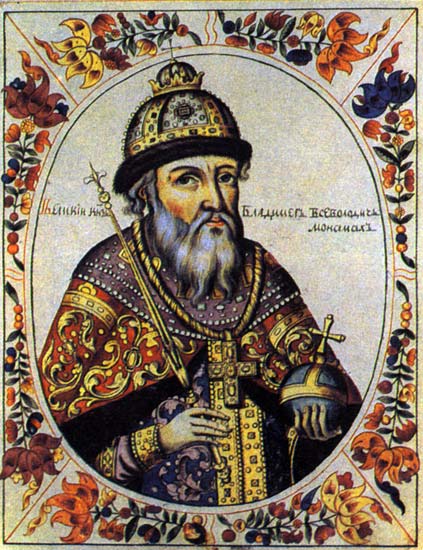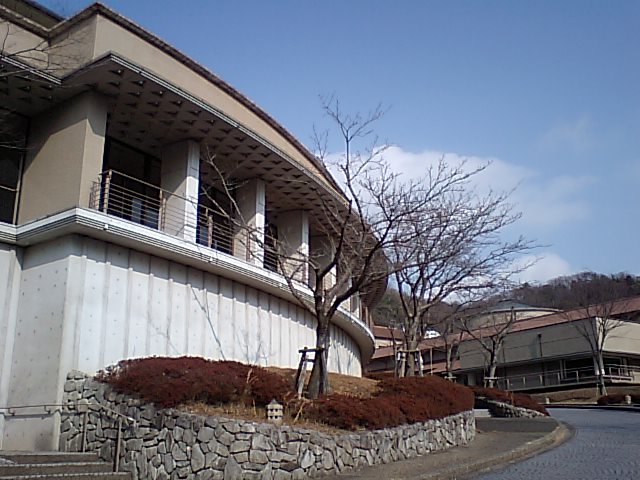|
Shun'e
, also known as , was a Japanese ''waka'' poet of the late-Heian period. One of his poems was included in the ''Ogura Hyakunin Isshu''. He produced a private collection, the ''Rin'yō Wakashū'', and was listed as one of the Late Classical Thirty-Six Immortals of Poetry. Name His Buddhist name is also read ''Sun'e'',''Britannica Kokusai Dai-hyakkajiten'' article "Shun'e". 2007. Britannica Japan Co. and he is also known by the name ''Tayū no Kimi''.''Digital Daijisen'' entry "Shun'e". Shogakukan. Biography He was born in 1113, the son of Minamoto no Toshiyori.McMillan 2010 : 147 (note 85). His maternal grandfather was Fujiwara no Atsutaka. He was tutored in ''waka'' composition by his father, but after the latter died he appears to have taken monastic orders in Tōdai-ji. His exact date of death is uncertain, but it was likely around 1191. Poetry Eighty-three of his poems were included in imperial anthologies, and he was recognized as one of the Late Classical Thirty-Si ... [...More Info...] [...Related Items...] OR: [Wikipedia] [Google] [Baidu] |
Hyakuninisshu 085
is a classical Japanese anthology of one hundred Japanese ''waka'' by one hundred poets. ''Hyakunin isshu'' can be translated to "one hundred people, one poem ach; it can also refer to the card game of ''uta-garuta'', which uses a deck composed of cards based on the ''Hyakunin Isshu''. The most famous and standard version was compiled by Fujiwara no Teika (1162–1241) while he lived in the Ogura district of Kyoto. It is therefore also known as . Compilation One of Teika's diaries, the ''Meigetsuki'', says that his son Tameie asked him to arrange one hundred poems for Tameie's father-in-law, Utsunomiya Yoritsuna, who was furnishing a residence near Mount Ogura; hence the full name of ''Ogura Hyakunin Isshu''. In order to decorate screens of the residence, Fujiwara no Teika produced the calligraphy poem sheets. Hishikawa Moronobu (1618–1694) provided woodblock portraits for each of the poets included in the anthology. Katsukawa Shunshō (1726–1793) designed prints for ... [...More Info...] [...Related Items...] OR: [Wikipedia] [Google] [Baidu] |
Fujiwara No Atsutaka
Fujiwara no Atsutaka (藤原 敦隆; 1060s–1120) was a Japanese nobleman and ''waka (poetry), waka'' poet of the Heian period. His real name may have been Tachibana no Atsutaka. Life Fujiwara no Atsutaka was a son of the Hizen-no-kami, governor of Hizen Province, Fujiwara no Toshikiyo (藤原俊清). His year of birth is unknown, but the 's entry for the Japanese calendar, 27th day of the seventh month of Hōan, Hōan 1 (22 August 1120 in the Julian calendar) says that he was in his fifties when he died earlier that same month. The ''Sonpi Bunmyaku'' does not mention a "Fujiwara no Atsutaka", but it includes a reference to "Mokunosuke Atsutaka" (木工助敦隆), son of "Tachibana no Toshikiyo" (橘俊清). Atsutaka's List of Japanese court ranks, positions and hereditary titles#Court positions, court position was ''Mokunosuke'' (assistant director of the ''Mokuryō'' 木工寮), and his father's name was the same, so it is believed that these two were the same individual. The ... [...More Info...] [...Related Items...] OR: [Wikipedia] [Google] [Baidu] |
1113 Births
Year 1113 ( MCXIII) was a common year starting on Wednesday of the Julian calendar. Events By place Byzantine Empire * Spring – Siege of Nicaea: Malik Shah, Seljuk ruler of the Sultanate of Rum, sends an expedition through Bithynia to the very walls of Nicaea. Seljuk forces raid Abydos on the Hellespont, with its rich custom-houses. Malik Shah attacks and captures Pergamum. Emperor Alexios I Komnenos sets out to meet the Seljuk invaders. He lifts the siege at Nicaea and wins a complete victory near Cotyaeum (modern Turkey). Levant * January 15 – The Order of Knights of the Hospital of Saint John of Jerusalem (Knights Hospitaller), founded to protect pilgrims to the Holy Land, is formally recognized by the papal bull (proclamation) ''Pie Postulatio Voluntatis'' issued by Pope Paschal II. * June 28 – Battle of Al-Sannabra: The Crusaders led by Baldwin I are defeated (due to a feigned flight) by a Seljuk army under Mawdud ibn Altuntash, the Turk ... [...More Info...] [...Related Items...] OR: [Wikipedia] [Google] [Baidu] |
Kamo No Chōmei
was a Japanese author, poet (in the waka form), and essayist. He witnessed a series of natural and social disasters, and, having lost his political backing, was passed over for promotion within the Shinto shrine associated with his family. He decided to turn his back on society, took Buddhist vows, and became a hermit, living outside the capital. This was somewhat unusual for the time, when those who turned their backs on the world usually joined monasteries. Along with the poet-priest Saigyō he is representative of the literary recluses of his time, and his celebrated essay '' Hōjōki'' ("An Account of a Ten-Foot-Square Hut") is representative of the genre known as "recluse literature" (sōan bungaku). Early life Born with the name Kamo no Nagaakira, he was the second son of Kamo no Nagatsugu, ''sho-negi'' or superintendent, of the Lower Kamo ( Shimogamo) shrine. He was also known by the title Kikudaifu. The exact year of his birth is unknown, but thought to be either 115 ... [...More Info...] [...Related Items...] OR: [Wikipedia] [Google] [Baidu] |
Iwanami Shoten
is a Japanese publishing company based in Tokyo.Louis Frédéric, ''Japan Encyclopedia'', Harvard University Press, 2005, p. 409. Iwanami Shoten was founded in 1913 by Iwanami Shigeo. Its first major publication was Natsume Sōseki's novel '' Kokoro'', which appeared as a book in 1914 after being serialized in the ''Asahi Shimbun''. Iwanami has since become known for scholarly publications, editions of classical Japanese literature, dictionaries, and high-quality paperbacks. Since 1955, it has published the ''Kōjien'', a single-volume dictionary of Japanese that is widely considered to be authoritative. Iwanami's head office is at Hitotsubashi 2–5–5, Chiyoda, Tokyo. Company history Iwanami Shigeo founded the publishing firm Iwanami Shoten in the Kanda district of Tokyo in 1913. In its early years, the company published authors such as Natsume Sōseki, Kurata Hyakuzō and Abe Jiro. It also published academic and literary journals in the field of philosophy, inc ... [...More Info...] [...Related Items...] OR: [Wikipedia] [Google] [Baidu] |
Articles Containing Japanese Poems
Article often refers to: * Article (grammar), a grammatical element used to indicate definiteness or indefiniteness * Article (publishing), a piece of nonfictional prose that is an independent part of a publication Article(s) may also refer to: Government and law * Elements of treaties of the European Union * Articles of association, the regulations governing a company, used in India, the UK and other countries; called articles of incorporation in the US * Articles of clerkship, the contract accepted to become an articled clerk * Articles of Confederation, the predecessor to the current United States Constitution * Article of impeachment, a formal document and charge used for impeachment in the United States * Article of manufacture, in the United States patent law, a category of things that may be patented * Articles of organization, for limited liability organizations, a US equivalent of articles of association Other uses * Article element , in HTML * "Articles", a song on ... [...More Info...] [...Related Items...] OR: [Wikipedia] [Google] [Baidu] |
Japanese Buddhist Clergy
Japanese may refer to: * Something from or related to Japan, an island country in East Asia * Japanese language, spoken mainly in Japan * Japanese people, the ethnic group that identifies with Japan through ancestry or culture ** Japanese diaspora, Japanese emigrants and their descendants around the world * Japanese citizens, nationals of Japan under Japanese nationality law ** Foreign-born Japanese, naturalized citizens of Japan * Japanese writing system, consisting of kanji and kana * Japanese cuisine, the food and food culture of Japan See also * List of Japanese people * * Japonica (other) * Japanese studies , sometimes known as Japanology in Europe, is a sub-field of area studies or East Asian studies involved in social sciences and humanities research on Japan. It incorporates fields such as the study of Japanese language, history, culture, litera ... {{disambiguation Language and nationality disambiguation pages ... [...More Info...] [...Related Items...] OR: [Wikipedia] [Google] [Baidu] |
People Of The Heian Period
The term "the people" refers to the public or common mass of people of a polity. As such it is a concept of human rights law, international law as well as constitutional law, particularly used for claims of popular sovereignty. In contrast, a people is any plurality of persons considered as a whole. Used in politics and law, the term "a people" refers to the collective or community of an ethnic group or nation. Concepts Legal Chapter One, Article One of the Charter of the United Nations states that "peoples" have the right to self-determination. Though the mere status as peoples and the right to self-determination, as for example in the case of Indigenous peoples (''peoples'', as in all groups of indigenous people, not merely all indigenous persons as in ''indigenous people''), does not automatically provide for independent sovereignty and therefore secession. Indeed, judge Ivor Jennings identified the inherent problems in the right of "peoples" to self-determination, as i ... [...More Info...] [...Related Items...] OR: [Wikipedia] [Google] [Baidu] |
12th-century Japanese Poets
1 (one, unit, unity) is a number, numeral, and glyph. It is the first and smallest positive integer of the infinite sequence of natural numbers. This fundamental property has led to its unique uses in other fields, ranging from science to sports, where it commonly denotes the first, leading, or top thing in a group. 1 is the unit of counting or measurement, a determiner for singular nouns, and a gender-neutral pronoun. Historically, the representation of 1 evolved from ancient Sumerian and Babylonian symbols to the modern Arabic numeral. In mathematics, 1 is the multiplicative identity, meaning that any number multiplied by 1 equals the same number. 1 is by convention not considered a prime number. In digital technology, 1 represents the "on" state in binary code, the foundation of computing. Philosophically, 1 symbolizes the ultimate reality or source of existence in various traditions. In mathematics The number 1 is the first natural number after 0. Each natural number, ... [...More Info...] [...Related Items...] OR: [Wikipedia] [Google] [Baidu] |
International Research Center For Japanese Studies
The , or Nichibunken (日文研), is an inter-university research institute in Kyoto. Along with the National Institute of Japanese Literature, the National Museum of Japanese History, and the National Museum of Ethnology (Japan), National Museum of Ethnology, it is one of the National Institutes for the Humanities. The center is devoted to research related to Japanese culture. History The official origins of the institute are traced to an early study carried out by the Japanese Ministry of Education, Science, and Culture in 1982 on "methods of comprehensive research on Japanese culture". After surveying the field of Japanese studies for several years, the ministry, under the administration of Prime Minister Nakasone Yasuhiro, established the International Research Center for Japanese Studies in 1987 in Kyoto with the prominent philosopher Umehara Takeshi as its first Director-General. Prominent Kyoto academics Umesao Nobuo and Kuwabara Takeo also played key roles in the foundi ... [...More Info...] [...Related Items...] OR: [Wikipedia] [Google] [Baidu] |


